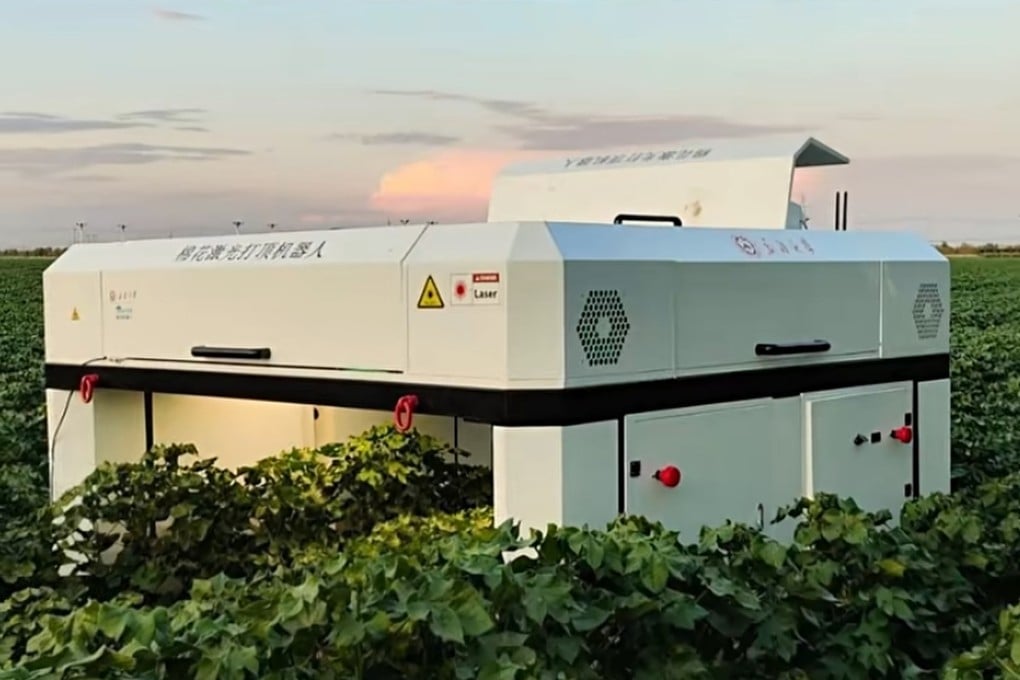China’s cotton topping robot promises fully automated production of Xinjiang crop
Developers say the device uses lasers to mechanise the last laborious task that until now has relied on manual workers

Cotton topping involves removing the plant’s top bud to redirect nutrients towards lateral branches, boosting boll formation and yield – a process that has long been plagued by inefficiency, inaccuracy and crop damage.
The robot, which made its debut in the city of Changji in the autonomous region of Xinjiang, is in the pilot test phase, with commercial availability expected to be still some years away.
It resembles a mobile canopy and uses advanced solid-state lidar – or light detection and ranging – and machine vision systems to identify the terminal cotton bud and vaporise it with a burst of heat delivered by a high-powered blue laser – all without touching the plant.
Because the plants are different heights and also sway in the wind, Xinjiang University’s Zhou Jianping, who led the development team, described the operation as “like hitting a moving target with a moving gun”.
“The robot achieves 98.9 per cent accuracy in bud detection, with under 3 per cent plant damage, and over 82 per cent topping success,” he told the official Xinjiang Daily newspaper.